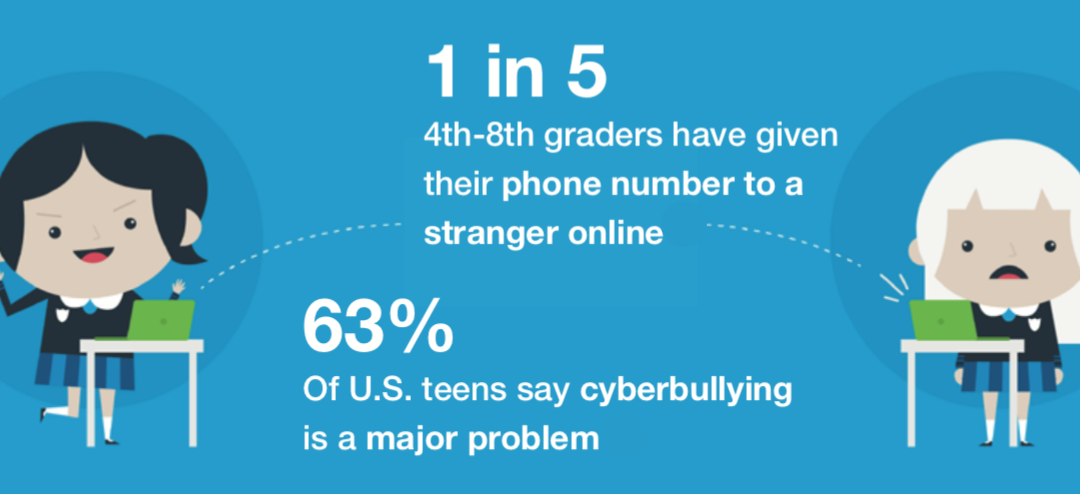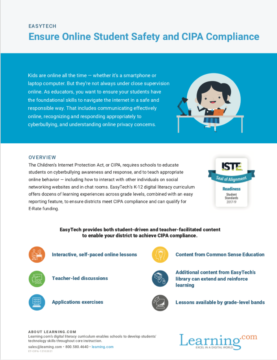CIPA compliance on the curriculum requirements. EasyTech content covers topics such as:
- Communicating effectively in online learning environments
- Recognizing and responding appropriately to cyberbullying
- Understanding online privacy concerns — whether that’s setting up strong passwords or knowing what information should never be shared over the internet
All content is available in age-appropriate grade-level bands, with interactive, self-paced online lessons, teacher-led discussions, and application exercises.
And with our new, gamified learning pathway called Tech Quest, CIPA compliant content is pre-loaded, making it easier than ever for districts and schools to ensure students are starting the year with these essential skills.
For schools that need to demonstrate CIPA compliance in order to qualify for E-Rate discounts (a federally sponsored program to help schools and libraries pay for internet service), Learning.com provides specialized CIPA reporting tools that make it easy for administrators to confirm that students are mastering the required content.
EasyTech makes it easy to teach students the foundational skills to stay safe on the internet, and helps districts achieve CIPA compliance in the process.
Click to download CIPA Compliance and E-Rate Information Sheet

Christine Byrd
Author at Learning.com
Christine has over 17 years of experience as an award-winning writer, thorough researcher, detail-oriented editor, and communications strategist. She specializes in providing internal and external communications for corporate, academic and nonprofit leaders.
Further Reading
How Computer Fundamentals Equip Students for Success
Understanding the basics of computer science is no longer optional for students to be future-ready, as the world becomes increasingly reliant on...
Teaching Students to Think Like Programmers | Learning.com
Recent discussions in education emphasize the importance of teaching students to think like computer programmers. Computational thinking involves...
Defining Computational Thinking
Computational thinking is a problem-solving process that involves various techniques and thought processes borrowed from computer science. It...





